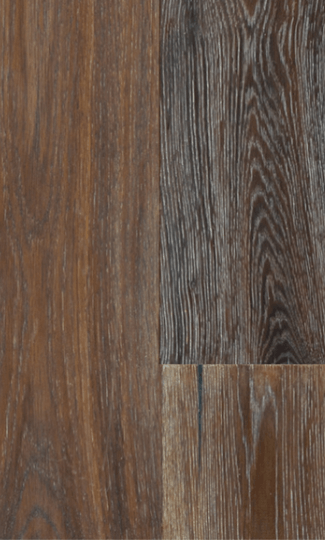5 Main Differences between Solid Hardwood and Engineered Hardwood Flooring
September 10, 2019
When thinking about interior design, there are so many decisions to make. From deciding which kitchen cabinets you’d like to choosing windows, balancing style and practicality is a difficult feat.
That said, there’s no more difficult a decision than selecting the right flooring for your home. Unfortunately, there’s no one size fits all solution. That said if you’re looking for longevity, durability and style, you can’t often beat hardwood flooring. Whatever your style or individual requirements, the wide options of hardwood floors available mean you’re sure to find something to suit your space.
That said, while hardwood floors are elegant and timeless, they’re not all created equally. When it comes to hardwood floors there are two main types: solid and engineered. Solid hardwood planks are created from a single thick piece of wood. Engineered hardwood, on the other hand, has a core of plywood with a layer of hardwood veneer applied to the surface.
Traditional solid hardwood floors have been in demand for many years but recently, engineered wooden floors have received a surge in popularity. As both options provide a beautiful finish, it can be hard to compare the two. To help you make an informed decision, we have compiled a list of 5 key differences between solid and engineered hardwood.
- Cost
In most scenarios, your budget will help determine which option is best for you. Generally, engineered hardwood is less expensive than solid hardwood, but at the end of the day, the quality and species of the wood will be the largest price determinant. Ultimately, exotic varieties of solid wood are more expensive than engineered hardwood.
There is no definitive cost for either type, the price range varies greatly. The cost of engineered hardwood is generally $3 to $14 per square foot, but this price will depend on plank thickness and wood species. Depending on the hardness and durability of the wood, most solid hardwood floors cost between $8 and $15 per square foot.
- Installation
As engineered hardwood is less likely to buckle or react to heat, there are a variety of installation options available. The fact that engineered wood does not react to changing temperatures, means that this alternative can be installed above or below ground level. Since solid hardwood will expand and contract over time, this wood can only be installed on or above ground level.
Engineered hardwood can be installed fast and in a variety of different spaces. This option is your best choice if you’re looking for a do-it-yourself project. Most styles of engineered wood can be glued or nailed down. In fact, in some cases, similar to laminate flooring, you can opt for a type that locks the planks together without fasteners.
Solid hardwoods generally have a longer installation process; the flooring is attached with a specific flooring nailer then sanded and finished. This sanding process can be difficult to navigate if you don’t have experience, and although you can do it yourself, hiring a professional will get the job done much quicker and neater!
- Stability & Durability
The good news is that both forms of hardwood offer durability and toughness. That said, solid woods still come out on top and are inherently sturdier as they must be permanently nailed or glued to your subfloor.
That said, in extreme temperatures, engineered woods have greater structural stability, which offers better resistance against buckling. While this is definitely a benefit, the durability of engineered wood is not comparable to solid forms, mainly because the surfaces on these engineered types are quite thin and therefore prone to chips over time.
- Moisture Resistance
When it comes to moisture, engineered wooden floors are probably the better choice. Engineered wood is constructed with a plywood base, which means that moisture is less likely to flex or warp the boards. The fibers in the plywood run in cross-wise layers, helping to resist moisture build-up.
Solid hardwood floors are not recommendable in any areas where moisture is prevalent. This means it’s probably best to avoid solid woods for your bathroom or any areas which require regular mopping. Even still, solid hardwood can still resist moisture to some extent, but this will depend on whether the wood is pre-finished or site-finished. Site-finished wood has a sealed top layer which helps to absorb some moisture.
- Environmental Considerations
Most people want to support products that sustain a positive environmental approach. In most cases, engineered hardwood floors are more eco-friendly than solid wood. The manufacturing process for engineered wood is less wasteful and requires less energy than most other flooring types. However, this isn’t to say that selecting solid hardwood isn’t a sustainable option. You can still buy environmentally friendly solid wood, provided it is purchased from a responsible supplier and is certified by the FSC (Forest Stewardship Council).
So, there you have it! Hopefully, these differences will help take the hassle out of your hardwood flooring selection.






